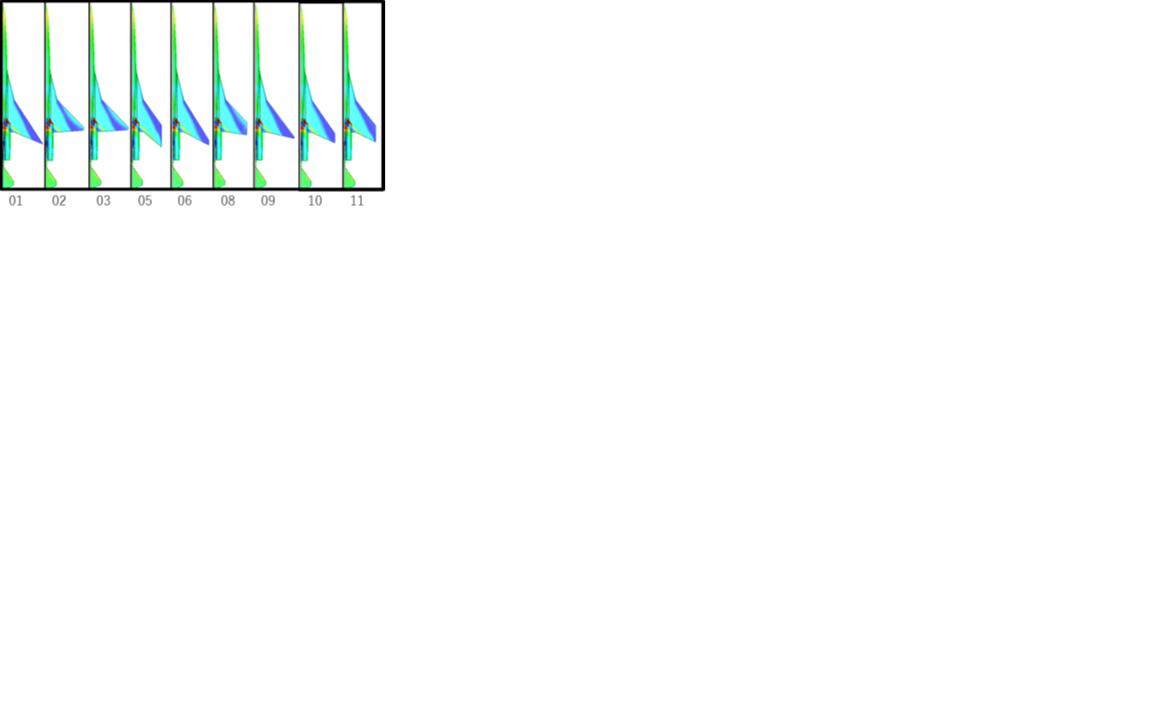Research and development for system integration of silent supersonic airplane technologies
JAXA Supercomputer System Annual Report April 2017-March 2018
Report Number: R17EA3800
Subject Category: Aeronautical Technology
- Responsible Representative: Yoshikazu Makino, Aeronautical Technology Directorate, Next Generation Aeronautical Innovation Hub Center
- Contact Information: Yoshikazu Makino makino.yoshikazu@jaxa.jp
- Members: Junichi Akatsuka, Naoko Tokugawa, Hiroaki Ishikawa, Yoshine Ueda, Dongyoun Kwak, Keisuke Ohira, Atsushi Ueno, Satoshi Kondo, Tatsunori Yuhara
Abstract
Currently, airplanes fly at about Mach 0.8, which is markedly slower than the speed of sound. From Japan, which is distant from Europe and the United States, it takes more than 12 hours to fly the distance. If we were able to fly faster than the speed of sound, for example at twice the speed, then the time for flying would be halved and the flight duration from Japan to Europe or the United States would be about 6 hours. If the travelling time were shortened, then economic activities would be bolstered by increased opportunities for business and tourism. Moreover, measures against natural disasters could be taken quickly, thereby ushering in a safer and more affluent society. If the flight duration were less than 6 hours, then the increasing frequency of hazards, nuisances, and ailments such as economy-class syndrome could be prevented. Perhaps most importantly, everyone would be able to enjoy travel more comfortably than ever. These airplanes that enable high-speed transportation, which fly at a speed faster than the speed of sound, are called supersonic civil transport.
Although the realization of supersonic civil transport is highly anticipated, successors to the Concorde, which was retired in 2003, have not been forthcoming. Shortcomings of the Concorde included poor fuel consumption and extremely high operational costs. In addition, because sonic booms are created, supersonic flight over land was not permitted. Its routes were severely restricted, which is another reason that business success eluded the Concorde. During flight experiments in 2005, using NEXST-1, a small supersonic experimental plane, JAXA demonstrated a technology to reduce air resistance and to improve fuel consumption efficiency. The D-SEND project first phase test was conducted in 2011. The second phase test was conducted in 2015, in an attempt to verify the concept of an airframe design technology for sonic boom abatement. As described, key technologies will be acquired to meet the requirements of supersonic passenger aircraft and to present JAXA’s original low sonic boom design concept model, “Quieter supersonic civil transport”.
Reference URL
Please refer to ‘D-SEND project / Silent supersonic transport technology | Sky Frontier – Sky Frontier Program | Aeronautical Technology Directorate‘.
Reasons for using JSS2
In the R&D for system integration of silent supersonic airplane technologies, the airplane design study of a small-size civil supersonic transport is conducted. Simulations for evaluating the aerodynamic performance and noise characteristics are conducted using JAXA supercomputer system.
Achievements of the Year
A parametric design study of wing planform is conducted in order to improve both cruise performance and low-speed performance of our supersonic concept.
Publications
N/A
Usage of JSS2
Computational Information
- Process Parallelization Methods: MPI
- Thread Parallelization Methods: Automatic Parallelizatio
- Number of Processes: 300
- Elapsed Time per Case: 1.00 hours
Resources Used
Fraction of Usage in Total Resources*1(%): 0.89
Details
Please refer to System Configuration of JSS2 for the system configuration and major specifications of JSS2.
| System Name | Amount of Core Time(core x hours) | Fraction of Usage*2(%) |
|---|---|---|
| SORA-MA | 5,616,847.60 | 0.74 |
| SORA-PP | 315,231.36 | 3.95 |
| SORA-LM | 5,570.59 | 2.87 |
| SORA-TPP | 0.00 | 0.00 |
| File System Name | Storage Assigned(GiB) | Fraction of Usage*2(%) |
|---|---|---|
| /home | 366.40 | 0.25 |
| /data | 12,584.53 | 0.23 |
| /ltmp | 8,203.13 | 0.62 |
| Archiver Name | Storage Used(TiB) | Fraction of Usage*2(%) |
|---|---|---|
| J-SPACE | 3.05 | 0.13 |
*1: Fraction of Usage in Total Resources: Weighted average of three resource types (Computing, File System, and Archiver).
*2: Fraction of Usage:Percentage of usage relative to each resource used in one year.
JAXA Supercomputer System Annual Report April 2017-March 2018



